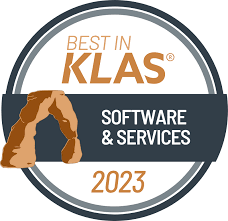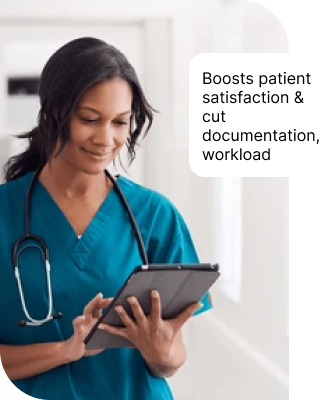Telehealth Integration in EHR to Assist Over-burdened Providers
Improved patient care by merging safety, communication, and real-time tools for providers: appointment alerts, pre-visit patient review, and live translation/transcription.
AI
EHR
Telehealth

Background
Vintage isn’t cool when it comes to healthcare technology
A US-based workgroup of the COVID-19 Healthcare Coalition conducted a Telehealth Impact Study of roughly 1,600 healthcare providers.
"Healthcare providers are overwhelmed by patient appointments, administrative tasks, and documentation, leading to burnout and reduced care quality. The COVID-19 pandemic highlighted the urgent need for remote healthcare services."
The pandemic's high-pressure environment demanded a solution that eases providers' burdens, requires minimal adoption effort, and meets mandated requirements
the problem
Makeshift telehealth tools lacked efficiency and raised security concerns
"Existing OKR software lacked intuitive design, making it hard for employees to align objectives with results. Managers struggled to review and approve OKRs on time, leading to bottlenecks."
"The outcome? Misaligned OKRs, affecting long-term productivity and business goals. The pandemic forced providers to rely on disorganized telehealth tools, complicating consultations and raising concerns about care quality and patient safety."
"Providers faced numerous challenges as makeshift video conferencing tools were not designed to meet specific needs like:"
- Communicating with patients in languages other than English led to frequent miscommunication and diagnostic errors.
- Re-entering patient information multiple times added to the already heavy workload of providers.
- Switching between the EHR and the call was distracting, diminishing the quality of patient interactions.
The overall scenario emphasized the need to innovate quickly and create a viable solution.

our goal
"With over 95% of U.S. hospitals using certified EHR platforms that uphold the highest security and privacy standards, integrating EHR systems with telehealth platforms became the optimal solution. This integration could significantly enhance clinical workflows and maximize the benefits of the technology."
Build a solution that:
- Helped providers prep in advance for the upcoming appointment
- Aided accurate and smooth communication
- Helped providers make the most of the window between appointments
- Addressed post-consultation requirements
UX Strategy
Designing a viable solution in a short span
The Minimum Viable Product (MVP) strategy is an iterative design approach based on constant user feedback and remains user-focused throughout. It aims to tackle problems or address needs in unique ways. It is an opportunity to set a benchmark in the industry. Here’s how the MVP process panned out for this project:

We began with identifying the key user journeys that would define the MVP:
- Conducting a scheduled person-visit appointment
- Adding a post-consultation documentation process
design process
The design process began with identifying key users, recreating their journey and identifying their pain points.
target users
healthcare Providers
physicians, nurse practitioners. and other medical professionals who use EHR systems for patient management
Admin Staff
individuals responsible for scheduling cases to teams, managing patient records and providing technical support to their teams.

user needs
- Time Constraints: Providers face difficulty balancing patient appointments, administrative duties, and documentation, often resulting in extended work hours.
- Patient Accessibility: Some patients encounter challenges with in-person visits, making telehealth a crucial alternative for remote consultations.
- Workflow Disruption: The lack of telehealth integration in current EHR systems forces providers to toggle between platforms during consultations.
- Documentation Challenges: Manually transferring telehealth session details to the EHR is often a time-consuming and labor-intensive task.
ideation
We created several UI variations and narrowed them down to two for testing with healthcare providers and administrative staff to gather feedback. We then iterated the design based on their input to ensure a user-friendly experience, considering the following factors:
- Users should easily view and manage their appointment schedules at a glance.
- Provide an integrated solution that is simple to access.
- Optimize content display to support smooth and effective conversations.
- Ensure the run-time translation feature is both easily accessible and highly accurate.

key highlights
- The unified dashboard allows providers to see both upcoming in-person and telehealth appointments in one location.
- A one-click telehealth initiation button within the EHR appointment interface ensures seamless integration.
- The split-screen interface enables providers to document notes in real-time during telehealth sessions.
- A custom algorithm automatically inserts contextual data into patient records in the EHR during the call.
UI Design

AGS Health awarded 2021 Best in KLAS for Outsourced Coding
User Experience category

impact
- This telehealth-integrated EHR solution is utilized for 1.5 million minutes daily across 80,000 facilities and over 130,000 physicians.
- It holds an average customer rating of 4.0.
- Trials showed a 15% increase in Patient Satisfaction Scores and a 1.8x reduction in Documentation Workload.


